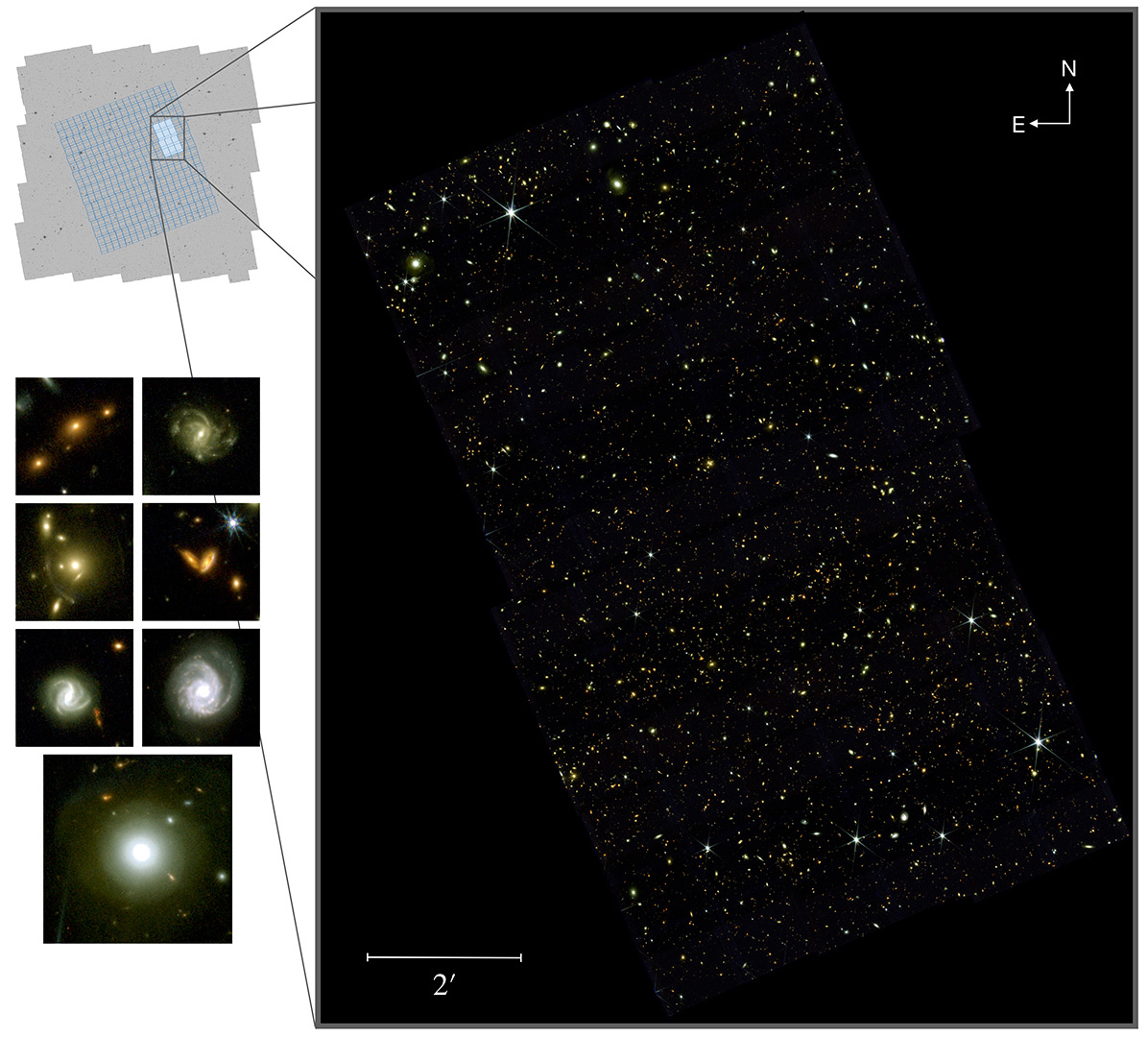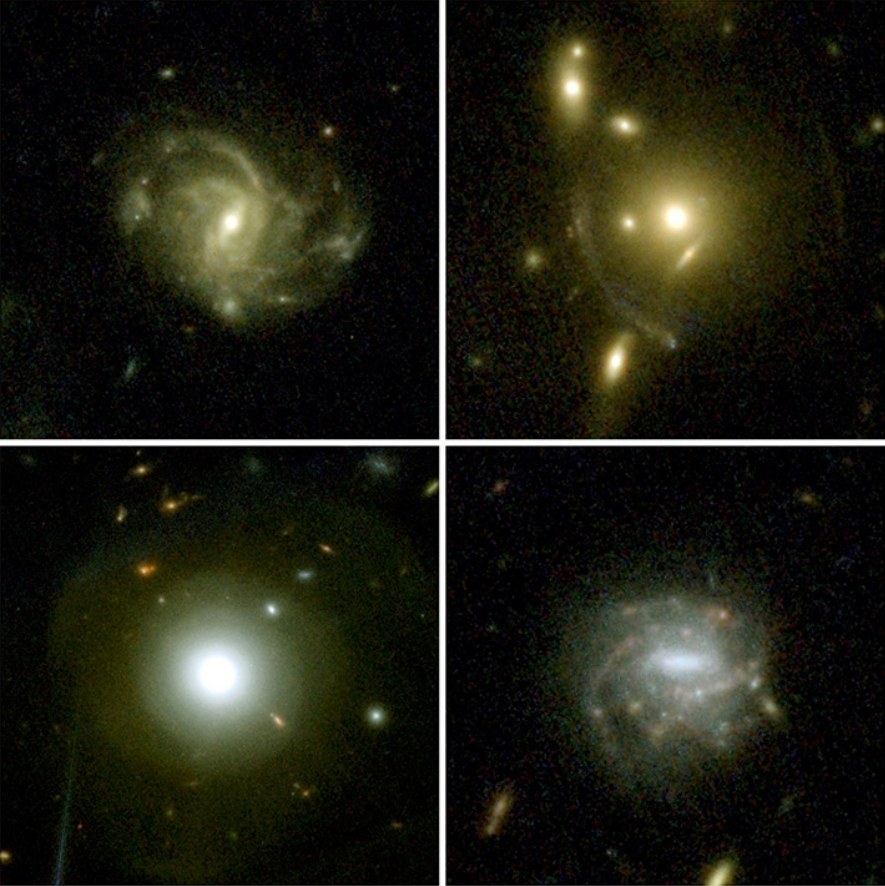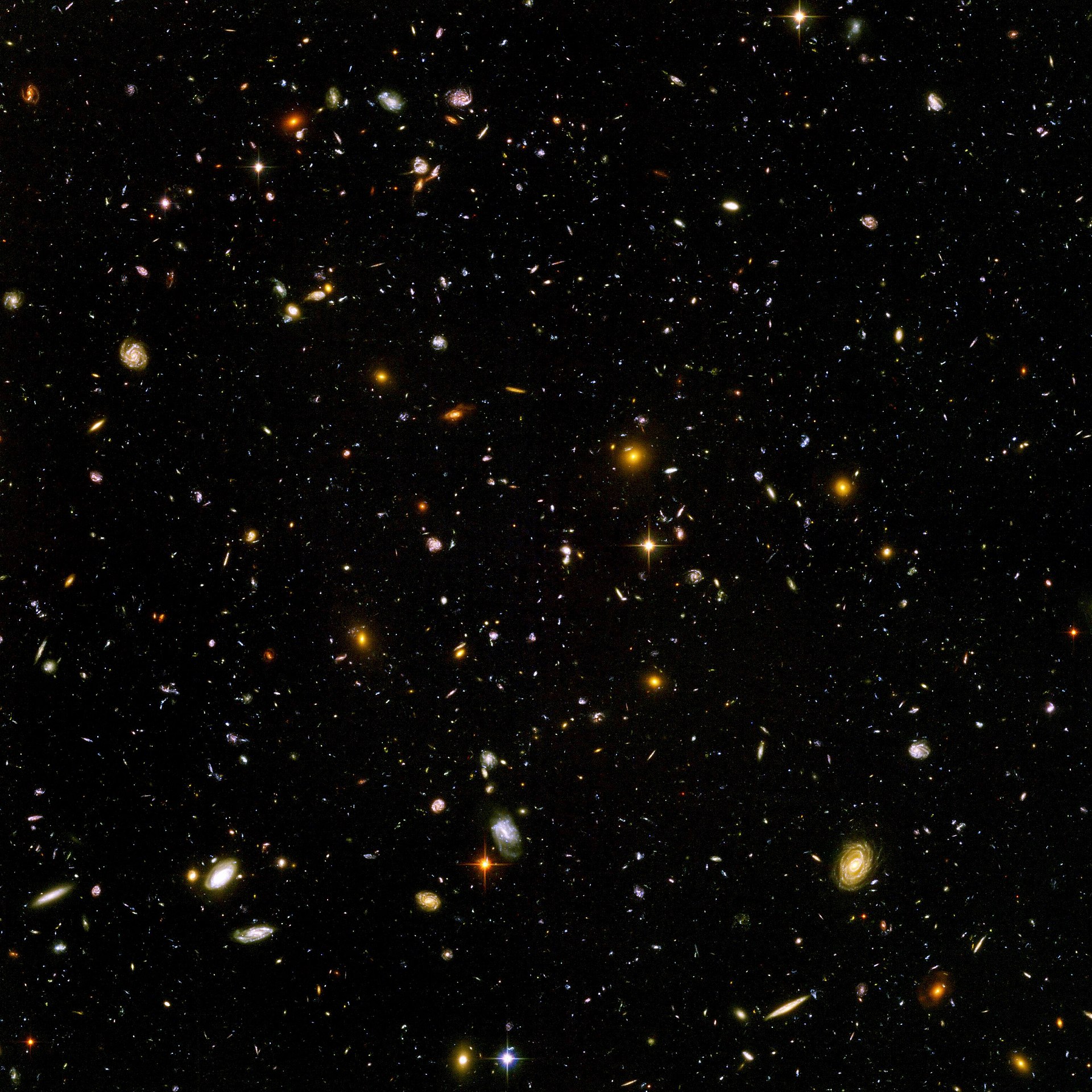The James Webb Space Telescope, which delights us with amazing photographs, has one important scientific goal – the observation of the oldest galaxies in the Universe. That’s why it has powerful tools on board to view the most distant objects. A detailed overview of one very old galaxy is only half the problem. To truly understand the ancient history of the Universe, astronomers need to consider how ancient galaxies are distributed so that they can understand the large-scale structure of the Universe.

This is exactly the purpose of the COSMOS-Web program. It uses James Webb to survey a large area of the sky and search for these rare ancient galaxies. During 255 hours of observations, the space observatory should study up to 1 million galaxies using both a near infrared camera (NIRCam) and a mid-infrared camera (MIRI). Despite the fact that there is still a lot of work to be done, the researchers of the COSMOS-Web program recently shared their first results.
“It’s incredibly exciting to get the first data from the telescope for COSMOS-Web. The results exceeded our expectations. We’ve been working really hard to produce science quality images to use for our analysis and this is just a drop in the bucket of what’s to come,” said principal investigator Jeyhan Kartaltepe from the Rochester Institute of Technology.
What is seen in the first photos of COSMOS-Web?
The first images contain four galaxies. They have been chosen because they represent different types of galaxies that scientists are looking for during the study. Among those found: a spiral galaxy with a bar, similar to our Milky Way, a galaxy in which intense star formation occurs, a galaxy after merging with another, and another galaxy which light is curved due to gravitational lensing.

This is only a tiny part of the overall mosaic of the deepest cosmos. The image above shows observations made between January 5 and 6, 2023, which gives an indication of how large and detailed the final full study will be. The current mosaic consists of six segments out of a total of 77, which will be made in April and May this year, and another 69 in December 2023 and January 2024.
“This first snapshot of COSMOS-Web contains about 25,000 galaxies—an astonishing number larger than even what sits in the Hubble Ultra Deep Field. It’s one of the largest JWST images taken so far. And yet it’s just 4 percent of the data we will get for the full survey. When it is finished, this deep field will be astoundingly large and overwhelmingly beautiful,” said principal investigator Caitlin Casey of the University of Texas at Austin.

Earlier we reported how James Webb looked into the “star maternity hospital” of a neighboring galaxy.
According to rit.edu
Follow us on Twitter to get the most interesting space news in time
https://twitter.com/ust_magazine
